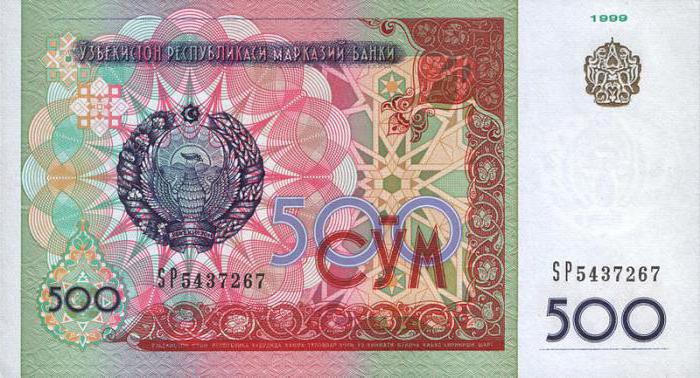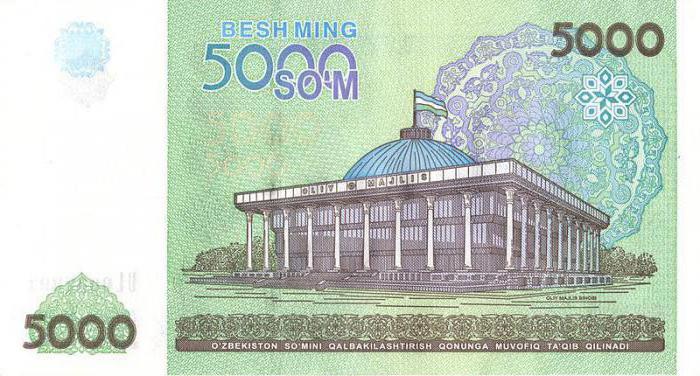The currency of Uzbekistan has the historical name "Sum". In the article we will talk about the history of its creation and appearance.
Uzbek sum: history
Almost throughout the entire period of the studied historical development of world civilizations in the territory of present Uzbekistan, state entities existed. In each of them went its own kind of currency. Sum as a monetary unit was used in the Golden Horde. The Mongolian mega-power also captured the lands of present-day Uzbekistan. Translated from the Turkic language, "sum" means "clean".

It was, of course, about gold. But in the Golden Horde, the sums were silver. In mints, ingots weighing just over 200 grams were cast. Such pieces of silver acted as a common means of payment.
The modern currency of Uzbekistan
Now there are sums in both paper and metal forms. This currency has been introduced since 1993. The collapse of the USSR led to the formation of 15 independent states. Sooner or later, each state had to introduce a national currency on its territory instead of the Soviet ruble. Many powers were not ready for the instant formation of a constant and stable monetary system, so temporary monetary units were introduced. Uzbekistan has taken the same path. The National Bank issued coupon sums, which already in 1994 were exchanged for a constant monetary unit - the Uzbek sum. Exchange was carried out in a ratio of "1000 to 1".
The currency of Uzbekistan has become one of the symbols of national independence and the strength of this state.

The appearance of the Uzbek sum
The main denominations of paper soum are 1, 3, 5, 10, 25, 50, 100, 200, 5000 soums. All banknotes necessarily depict the national emblem of the republic, explanatory inscriptions, etc. On the back of the bill, the National Bank decided to place images of the great architectural monuments of the state.
On a banknote in 1 sum of green-pink color, we will see a photo of the National Theater named after Alisher Navoi, which is located in the capital.
The bill in 3 sums will be remembered by tourists with a beautiful image of the mausoleum of Chashma-Ayub from Bukhara. Both of the above banknotes are made in the size of 120x62 mm.
The bill in 5 sum is three-colored, because there are fragments of blue, blue and red. The size of the banknote is slightly larger - 142x69 mm. The same parameters regarding the length and width are set for the following bills: 10, 25, 50 and 100 soums. All other larger denominations are mostly monophonic (green, red, etc.). The length and width of banknotes of 200, 500, 1000 and 5000 sums is also standard - 144x78 mm.
By the way, recently the Central Bank of Uzbekistan issued a bill of 10,000 soums. The national currency of Uzbekistan is used mainly within the state and is not popular on world currency markets.

